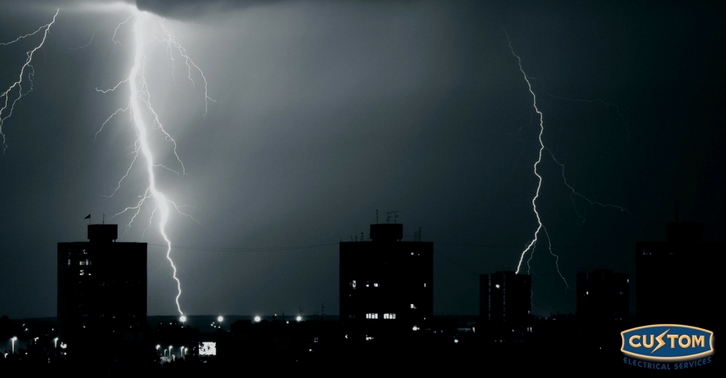
What Causes Power Surges
A sudden increase in current occurs when more power is being delivered to the same system. If a lightning storm strikes a transformer or relay that’s connected to the same grid you’re on, excess power is diverted to your home and creates an increase in current. This sudden surge is what damages components. But, it isn’t just limited to sudden electrical discharges either. When power is applied to a system, it has substantial initial current. This is known as inrush current and is the reason that you’re advised to disconnect electronics whenever there’s an outage.
Once power is restored to a system, either because you turn on a switch or the power grid is reconnected, initial current surges into the system. Disconnecting devices helps to decrease that inrush current. The electrical panel in your home is also designed to handle inrush current, which is why your breaker system doesn’t automatically trip whenever power is restored. On a smaller scale, any sudden call for extra power pushes a small surge into the system. When you power up an electric vacuum cleaner or portable space heater, there’s a small surge. The more powerful the device, the larger the surge. These are the types of surges that common surge protectors guard against. For lightning strikes you’ll need something better.
Whole Home Surge Protection
While the majority of surges are protected against by those tiny power strips, because most surges originate inside your home, they aren’t strong enough to protect against the dangerous surges that will irreparably damage your in-home electronics. Most homewoners prefer the power strip surge protectors because they’re inexpensive. But, while a whole-home surge protector can cost over $200 to add on to your home, they don’t suffer from many of the drawbacks found in the tiny in-home protectors.
Whole-home surge protectors guard your entire home from outside surges. They’re installed near and wired to the electrical service panel for your home. Any power surge that travels to your home is immediately shunted away, preventing disaster from ever reaching your home. You’ll find that whole-home surge protectors are also not as fragile as standard home surge protectors. They’ll last for years and are less likely to be burnt out by a single surge. A quality surge protector is capable of shunting tens of thousands of amps without burning out.
If you want the best in electrical protective devices, a whole-home surge protector is the right choice. Compared to most safety installations, they’re relatively inexpensive and you only need to install one device to protect your home for years. It’s still a good idea to use power strips to protect in-home devices from smaller surges, but you need a quality surge device to protect against lightning storms or substation surges.
For the best in quality electrical repair work and installations, contact the professionals at Custom Electric! Be sure to check back here each week for helpful advice, news, and guides or follow us on Facebook and Twitter!



